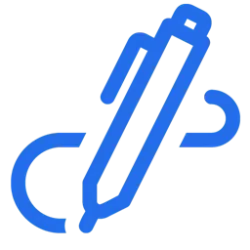- Local time
- 3:35 PM
- Posts
- 2,241
- OS
- WIN 11, WIN 10, WIN 8.1, WIN 7 U, WIN 7 PRO, WIN 7 HOME (32 Bit), LINUX MINT
I can only speak from personal experience. Here is MS community link addressing this problem:Only MBR has a limit of 4 Primary partitions and (using a 512-byte sectors) a drive size of 2.2T (one or multi partitions)
Master boot record - Wikipedia
en.wikipedia.org
My friend, who is light years ahead of me in his knowledge and expertise, had an old SATA II Seagate external hard drive. He could not get it to keep the full 3TB as a single partition until he converted it to GPT. However, it kept on reverting back to 2.2 TB and leaving the rest unallocated even after he converted the drive to GPT. It refused to hold the configuration. I was perplexed about it as I had not heard of such a thing before. I dismissed it as an anomaly.
About a year later, I had a WD "My Book" that began to behave the same way but it was 4TB. Converting it to GPT made no difference. I could go through the process but it would always revert to an unallocated partition. So the problem wasn't in Seagate architecture or design and it wasn't exclusive to Western Digital external hard drives either. The problem is with older mechanical hard drives. Since then I've run into this issue many times, especially with older WD "My Book" type drives and my solution to the problem is to break open the enclosure and remove the drive from the bridge (which often goes defective anyway) and pop it into a newer external enclosure. I still have an old WD drive like this and even with the replacement enclosure and after converting to GPT it won't keep the partitions unless I limit them to 2TB. That has been my personal experience. Key words: Older hard drives.
@kanenas I have only found this to be the case with older mechanical hard drives of the external variety. Should you decide to remove it from the enclosure you might be able to remedy this problem somewhat. It could very likely be a bad bridge in the original enclosure as this is a common issue with many older external drives. Of course I have no clue what you are using for an external enclosure so I could be barking up the wrong tree. All I know is that this problem is NOT exclusive to MBR drives. Perhaps it only happens to old external hard drives that have been converted to GPT. Anyway, that has been my personal experience.You said GPT handles only up to 3TB partitions?!
I had no idea that GPT is also limited with such low partition sizes (in today's disk market).
This explains why after I converted the 4TB to GPT (as a single partition), the system wouldn't recognize it.
Until I resolve the BIOS problem, I can try convert it to GPT (after splitting it in two), using the Win 10 in my laptop.
There goes my weekend :)
My advice is to attempt to make your repairs one drive at a time. Physically disconnect all drives that you are not currently working on before booting up your PC. Make sure you have your boot order established each time you add a new drive to work on. If you have two operating systems using the same license key you will definitely have a recipe for trouble on your hands. You do not need two versions of Windows 11 running on the same PC anyway, do you? If you plan on running dual boot on your PC please specify. Freebooter and others here are very capable with helping in this regard. BUT we need to address these issues one at a time.
My Computer
System One
-
- OS
- WIN 11, WIN 10, WIN 8.1, WIN 7 U, WIN 7 PRO, WIN 7 HOME (32 Bit), LINUX MINT
- Computer type
- PC/Desktop
- Manufacturer/Model
- DIY, ASUS, and DELL
- CPU
- Intel i7 6900K and i9-7960X / AMD 3800X (8 core)
- Motherboard
- ASUS X99E-WS USB 3.1 and ASUS X299 SAGE
- Memory
- 128 GB CORSAIR DOMINATOR PLATINUM (B DIE)
- Graphics Card(s)
- NVIDIA 1070 and RTX 3070
- Sound Card
- Crystal Sound (onboard)
- Monitor(s) Displays
- single Samsung 30" 4K and 8" aux monitor
- Screen Resolution
- 4K and something equally attrocious. I'll be working on this.
- Hard Drives
- A, B, C, D, E, F, G, H, I, J, K, L, M, N, O, P, Q, R, S, T, U, V, W
Ports X, Y, and Z are reserved for USB access and removable drives.
Drive types consist of the following: Various mechanical hard drives bearing the brand names, Seagate, Toshiba, and Western Digital. Various NVMe drives bearing the brand names Kingston, Intel, Silicon Power, Crucial, Western Digital, and Team Group. Various SATA SSDs bearing various different brand names.
RAID arrays included:
LSI RAID 10 (WD Velociraptors) 1115.72 GB
LSI RAID 10 (WD SSDS) 463.80 GB
INTEL RAID 0 (KINGSTON HYPER X) System 447.14 GB
INTEL RAID 1 TOSHIBA ENTERPRIZE class Data 2794.52 GB
INTEL RAID 1 SEAGATE HYBRID 931.51 GB
- PSU
- SEVERAL. I prefer my Corsair Platinum HX1000i but I also like EVGA power supplies
- Case
- ThermalTake Level 10 GT (among others)
- Cooling
- Noctua is my favorite and I use it in my main. I also own various other coolers.
- Keyboard
- all kinds.
- Mouse
- all kinds
- Internet Speed
- 360 mbps - 1 gbps (depending)
- Browser
- FIREFOX
- Antivirus
- KASPERSKY (no apologies)
- Other Info
- Gave Dell touch screen with Windows 11 to daughter and got me an OTVOC. Being a PC builder I own many desktop PCs as well. I am a father of five providing PCs, laptops, and tablets for all my family, most of which I have modified, rebuilt, or simply built from scratch. I do not own a cell phone, never have, never will.



















